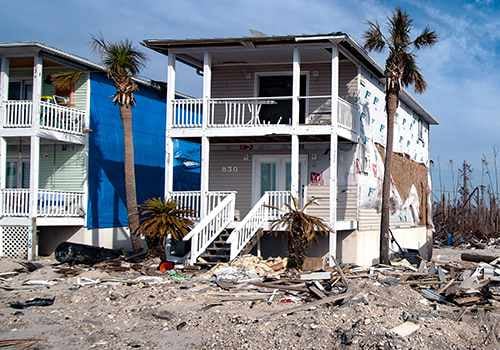If your home has been damaged by Hurricane Helene or Milton, you’re likely feeling overwhelmed by the destruction left behind. Whether it's minor damage or more extensive structural issues, knowing the steps to take immediately after the hurricane can help you recover faster and avoid complications. Here’s a guide to help homeowners handle damage from these storms.
Assess and Document the Damage
Once you can safely enter your home, begin assessing the extent of the damage. Documenting everything is essential for your insurance claim. Take detailed photos and videos of all areas impacted by the hurricane, including:
- Broken windows, doors, and roofs
- Flooded or water-damaged areas
- Fallen trees or debris that may have hit the structure
- Interior damage to walls, ceilings, and personal property
Make a list of any damaged or destroyed items, including furniture, appliances, and electronics.
Contact Your Insurance Company
Reach out to your homeowner’s insurance company as soon as possible. Many insurers have a time limit on reporting hurricane damage, so prompt action is important. When you file your claim, provide all the documentation you’ve gathered, including photos, videos, and a detailed list of damaged items.
What to Expect During the Claims Process:
- Insurance adjuster visit: Your insurer will likely send an adjuster to inspect the damage in person. Be prepared to point out everything you’ve documented.
- Deductibles: Many homeowners' insurance policies have special hurricane deductibles, which are higher than regular ones. Make sure you understand how much you’ll be responsible for before the insurance kicks in.
- Flood damage: If your home has experienced flooding, this usually requires a separate flood insurance policy, as most homeowner’s insurance plans do not cover water damage caused by rising floodwaters.
Make Temporary Repairs
While waiting for the insurance process to unfold, you should make temporary repairs to prevent further damage. For example:
- Cover broken windows and doors with plywood or plastic sheeting.
- Tarp over any areas of the roof that are missing shingles or have holes.
- Mop up any standing water and ventilate the space to prevent mold growth.
- Remove anything that touched flood water including drywall, baseboards, trim, furniture, and cabinets.
Keep all receipts for any materials and labor costs related to temporary repairs, as your insurance may reimburse you for these expenses.
Hire a Reputable Contractor
Once your insurance claim is approved, it’s time to start planning permanent repairs. Be cautious when hiring a contractor, as post-hurricane scams are common. Stick with licensed, insured, and reputable contractors who specialize in hurricane damage repair. Get multiple quotes to ensure fair pricing and check online reviews or local references.
Look into Disaster Relief Programs
If your insurance doesn’t cover all of the damage, or if you don’t have the necessary coverage for flooding, you may be eligible for disaster assistance from federal or state programs. The Federal Emergency Management Agency (FEMA) often provides aid to homeowners who have suffered damage from significant storms like Hurricane Helene or Milton.
You can apply for FEMA assistance or other local relief programs that may offer financial aid, temporary housing, or help with rebuilding costs.
Prepare for Future Hurricanes
Recovering from a hurricane like Helene or Milton is a lengthy process, but it’s also a chance to fortify your home for future storms. As you repair or rebuild, consider making your home more hurricane-resistant by:
- Installing impact-resistant windows and doors
- Reinforcing your roof structure and using hurricane straps
- Adding storm shutters for additional protection
- Elevating your home’s utilities above flood level
Remember, hurricane recovery takes time, but taking the right actions will help you rebuild stronger than before.



